It’s immediately recognizable as a VW Bus, however what does it compete towards? And can its attract final?
The 2025 Volkswagen ID.Buzz, an electrical reinvention of VW’s Nineteen Sixties Microbus, is lastly right here. After a seven-year wait, the high-style 3-row field on wheels will hit dealerships in November and December—with precedence going to these sellers who bought greater numbers of VW’s ID.4 compact electrical crossover.
The Buzz retails at $61,500 to $71,500, with EPA-rated mixed ranges of 234 miles in base rear-wheel-drive type or 231 miles with elective 4Motion all-wheel drive. North America will get a longer-wheelbase model of the Buzz bought in Europe, with six or seven seats relying on trim—and, to reply a typical query, we gained’t get the industrial panel-van model supplied there. (Search for “rooster tax” for the explanation why.)
The media drive in mid-October was held within the San Francisco Bay Space, already dwelling to extra EVs per capita than every other a part of the U.S. save Los Angeles. The launch occasion began with a drive of greater than a dozen Buzzes down the well-known Lombard Avenue switchbacks for a bunch photograph. Then we headed north, with images stops beneath the Golden Gate Bridge, alongside the ocean, and at numerous scenic factors in Marin County.
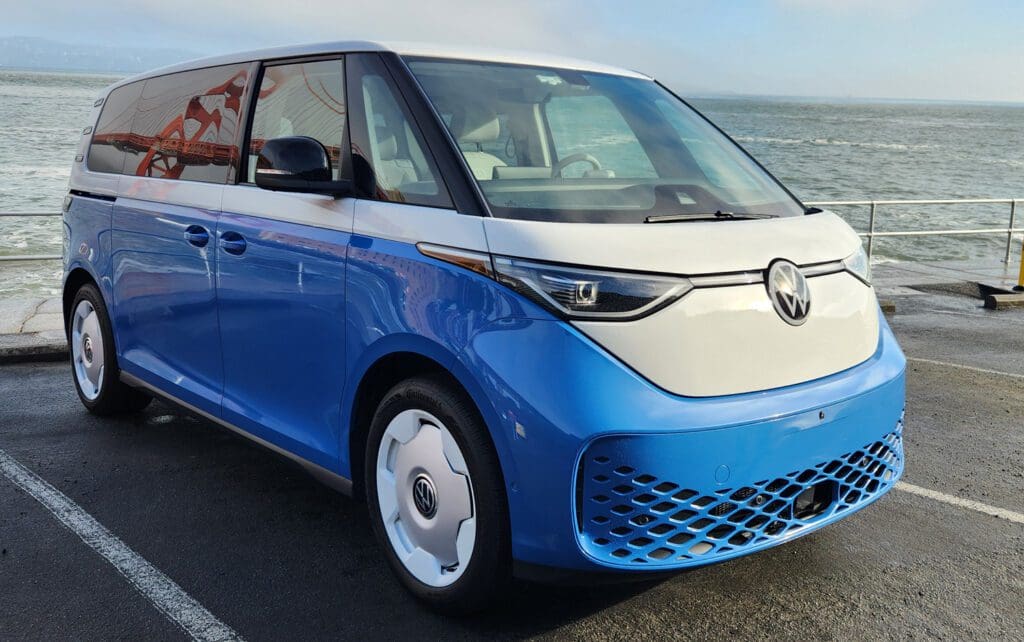
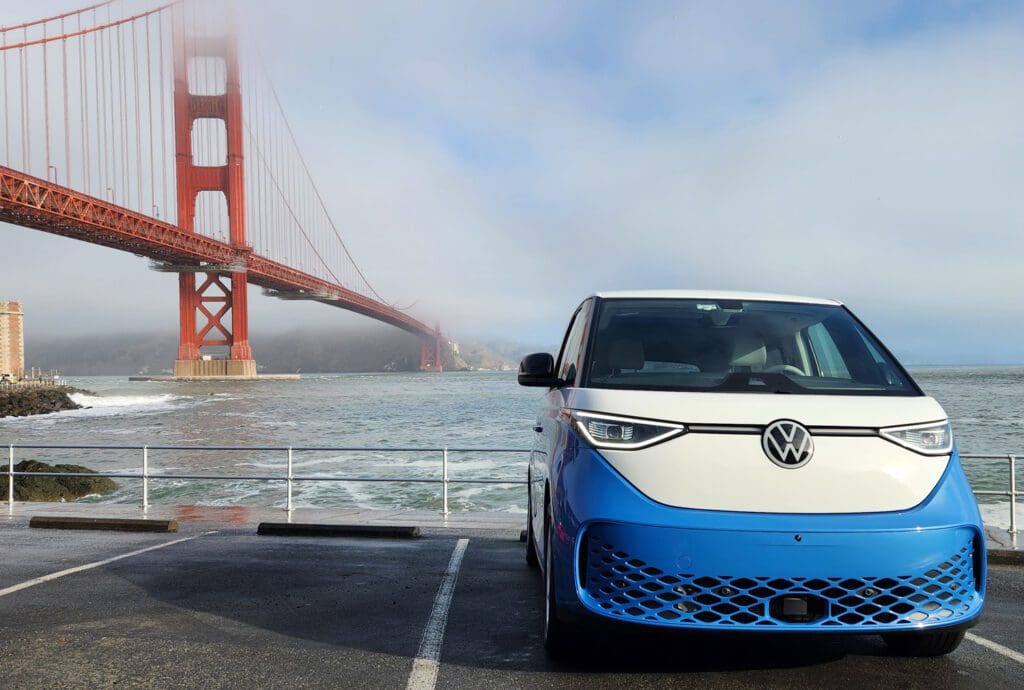
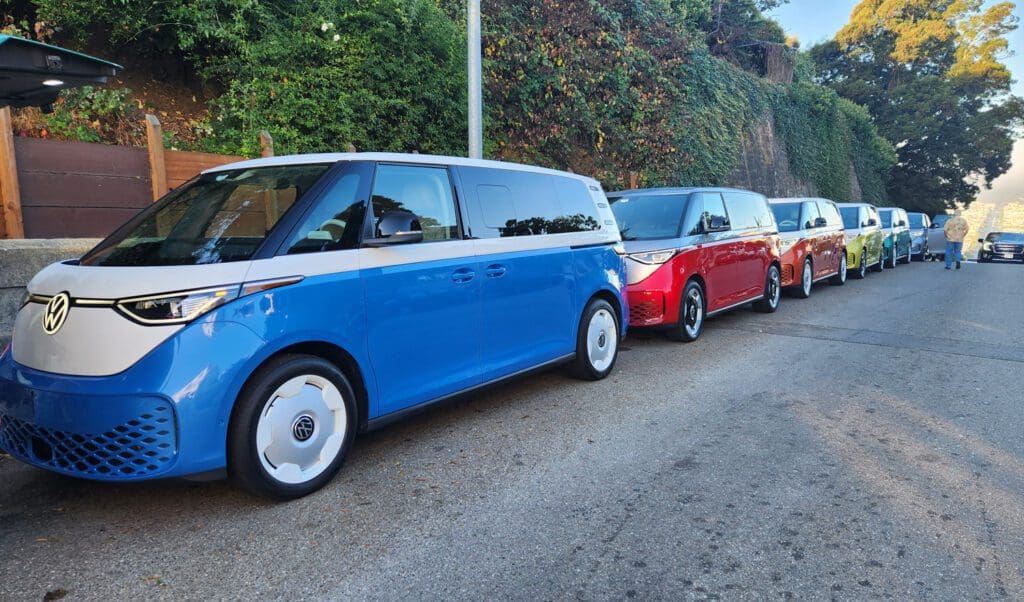
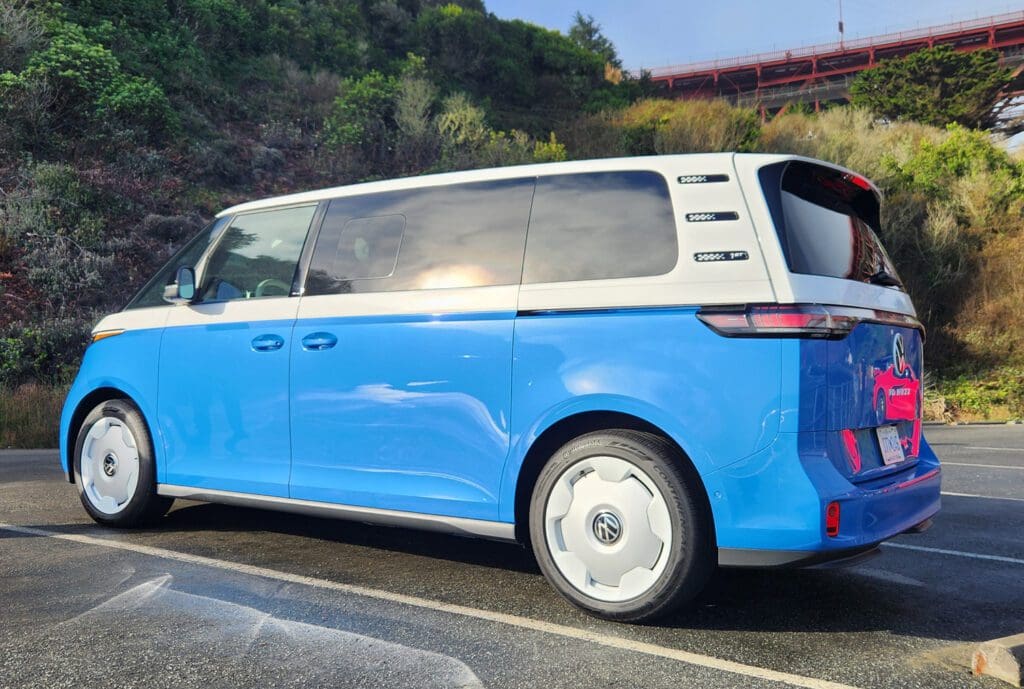
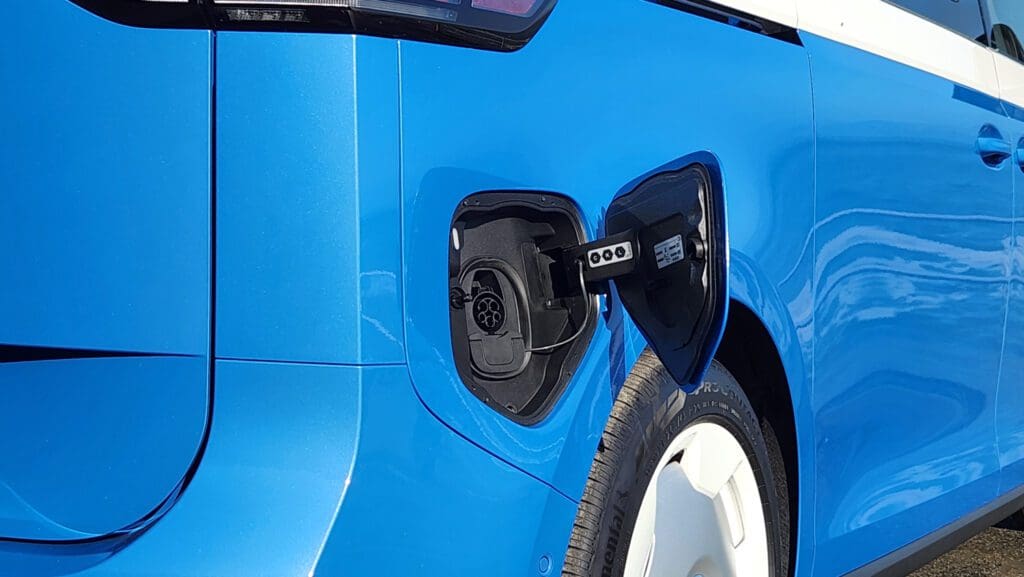
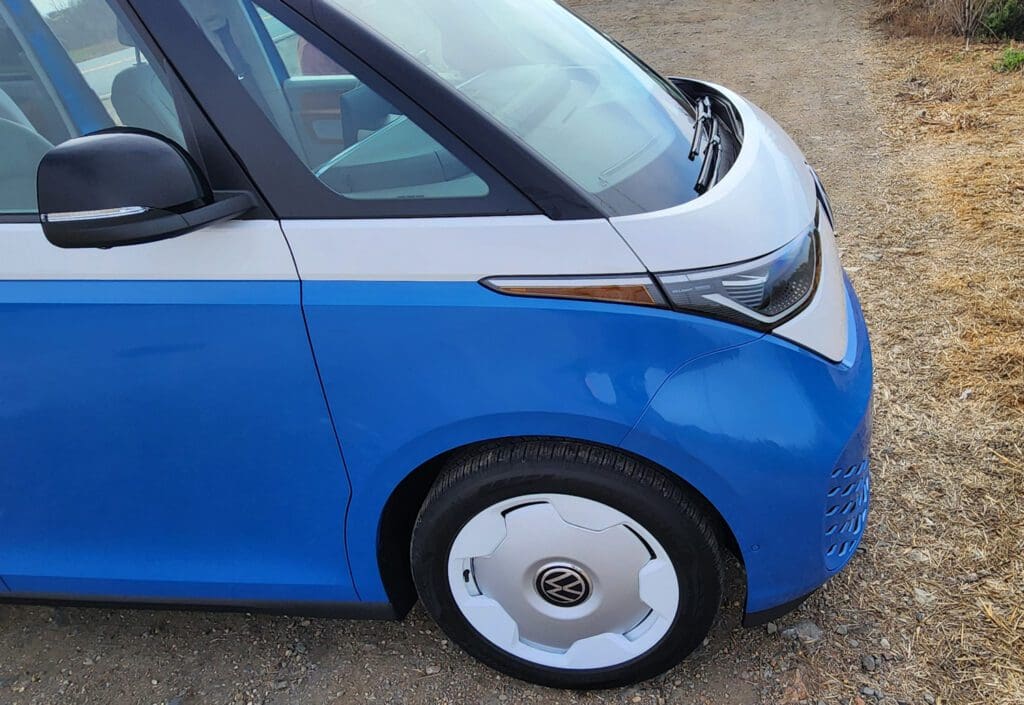
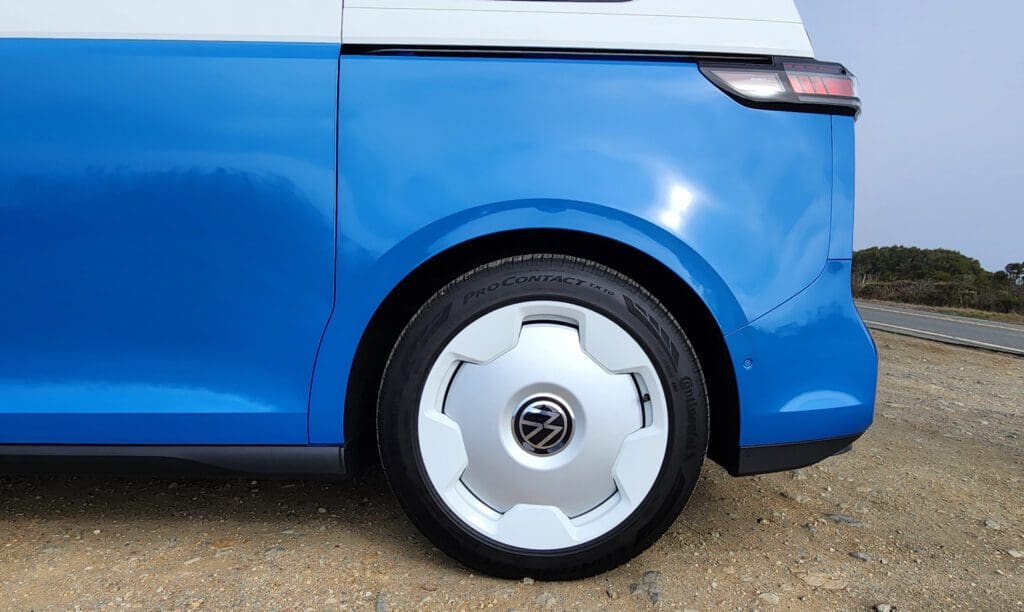
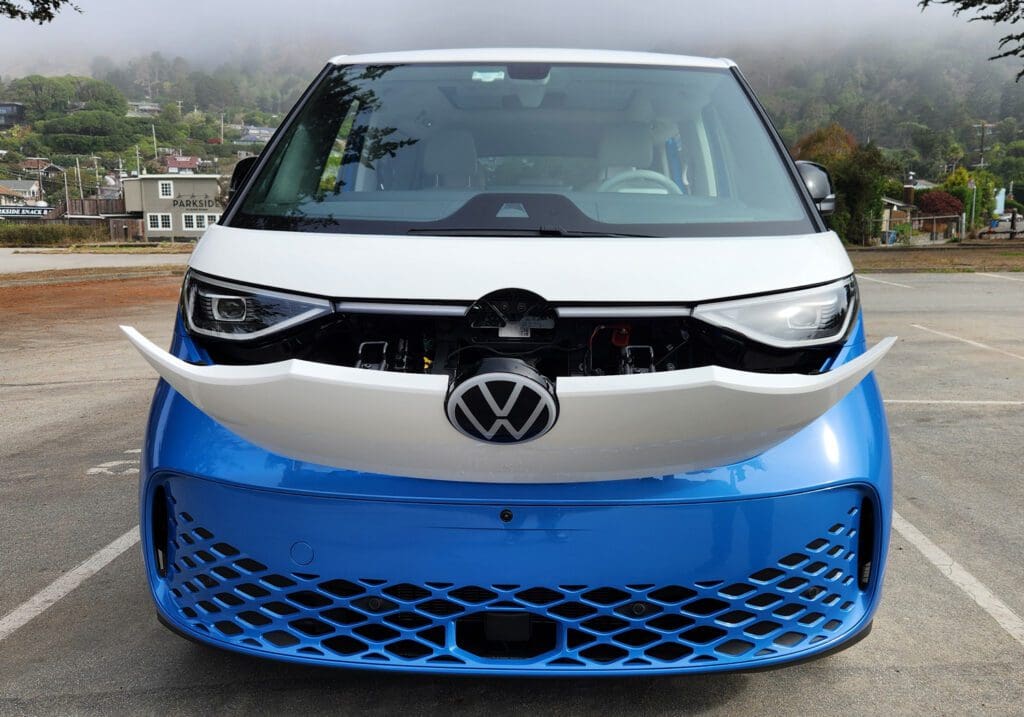
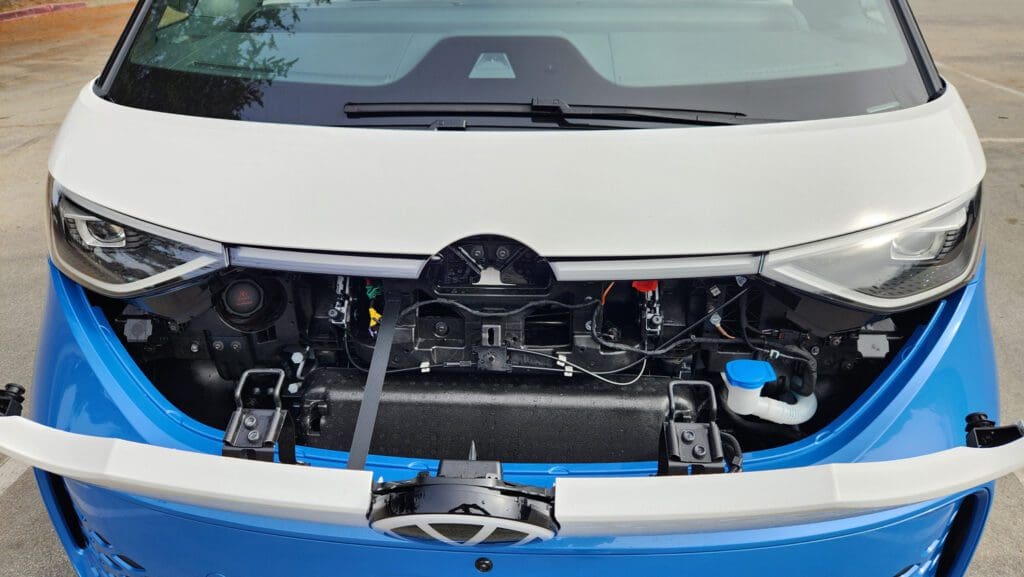
Pictures by John Voelcker.
Iconic form, two-tone telltale
The ID.Buzz nonetheless will get as many glances, photographs, and questions from bystanders because it did when manufacturing was introduced in August 2017. On the spot recognition comes from the big, illuminated VW badge on the entrance, and likewise from one in all eight two-tone paint jobs. All however one use a white higher physique over a selection of orange, yellow, inexperienced, blue, “blue charcoal,” silver, or gray. To my eyes, the silver-over-Cherry Crimson mixture was much less profitable. Three uniform colours—black, white, and silver—spherical out the outside choices. Inside, North American consumers have a selection of three “colour worlds” not supplied in different markets for the interiors: Copper, Dune (ivory), or Moonlight (deep brown). The Buzz does not provide, as VW explicitly famous, the stereotypical all-black German inside. And hurray for that.
The Buzz is undeniably tall, vertical, and slab-sided. The brief entrance nostril and a set window between the windshield pillar and the entrance of the door body neatly disguise the substantial distance between the bottom of the windshield and the motive force + entrance passenger inside. That gives the type of security crush zone that didn’t exist within the unique Sort 2, which went for a number of a long time after its 1950 launch with the motive force’s toes simply 18 inches or so from the crash.
Iconic design parts embody very brief overhangs, very good outward visibility because of upright seating and plenty of home windows, large inside quantity for its footprint, and rear-wheel drive. It’s now supplied by an electrical motor, not an air-cooled flat-4 combustion engine, however nonetheless.
The entrance and aspect views are interesting, however the vertical, knife-edged rear appears to me the automobile’s least profitable angle. Nonetheless, it opens on 18.6 cubic toes of load area behind the third row, which expands to 75.5 cu ft when you take away the third row solely—and a exceptional 145.5 cu ft with the second row folded flat (it doesn’t take away).

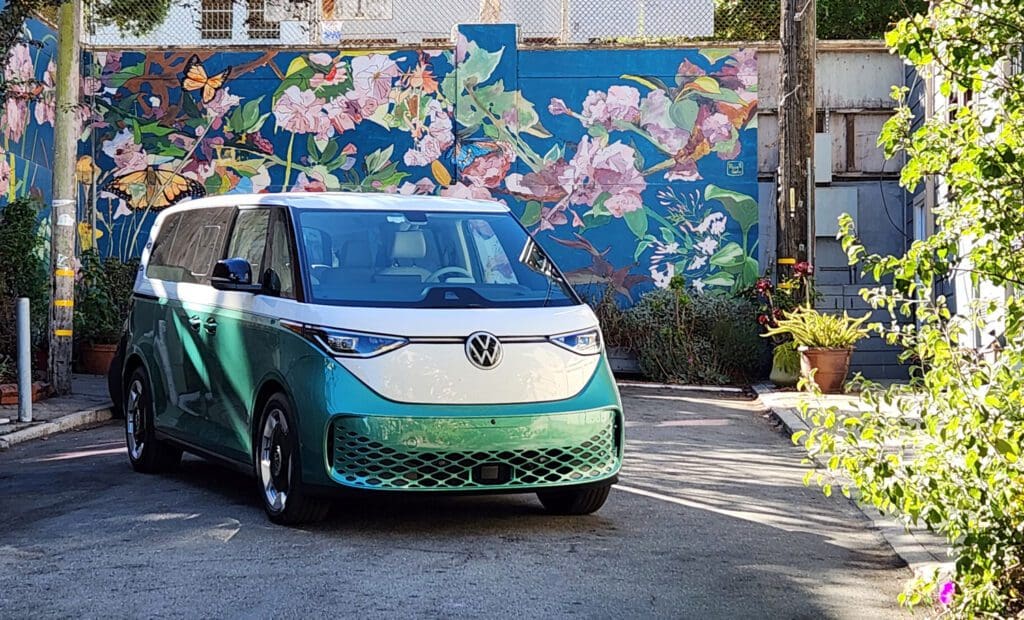
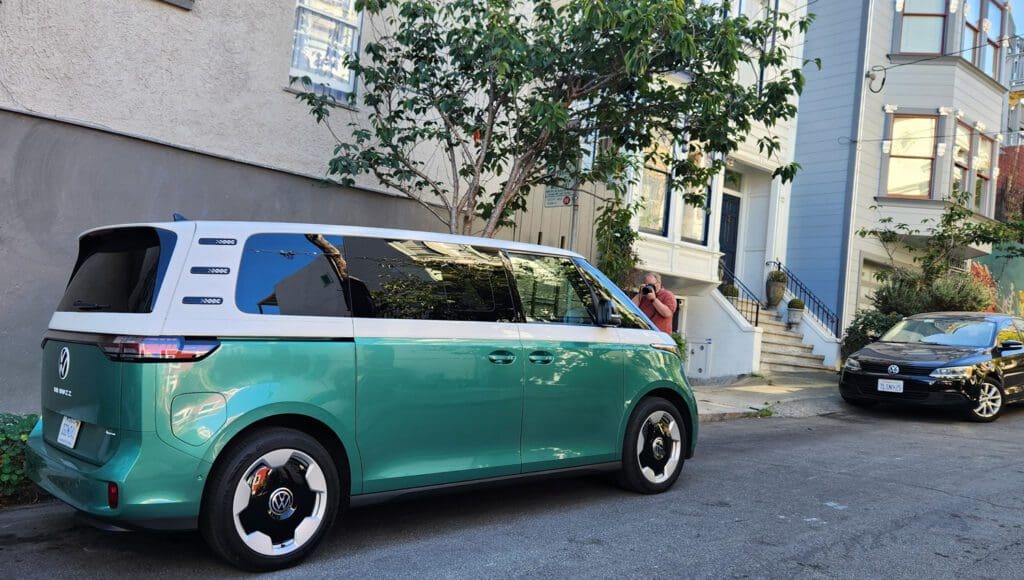

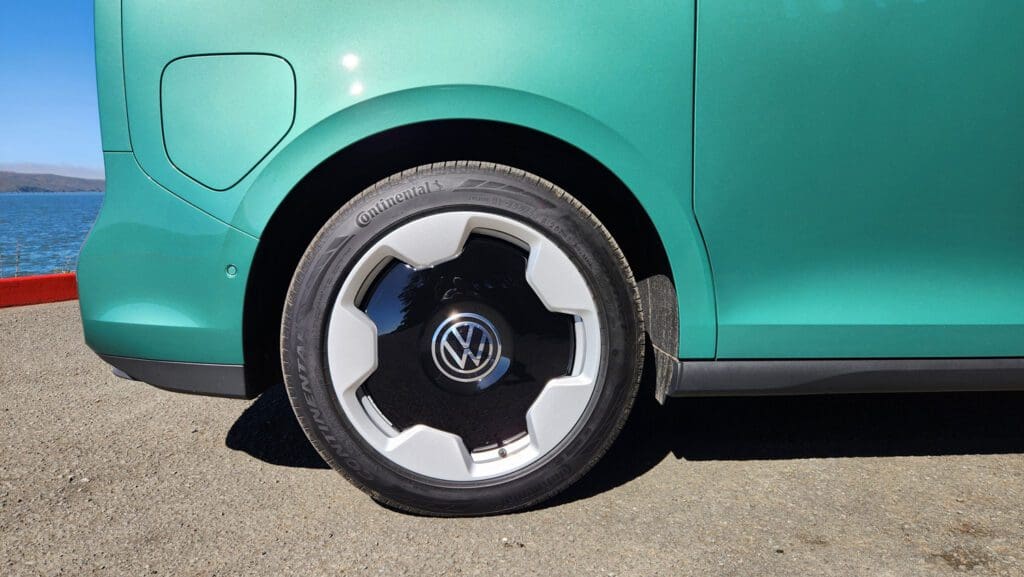
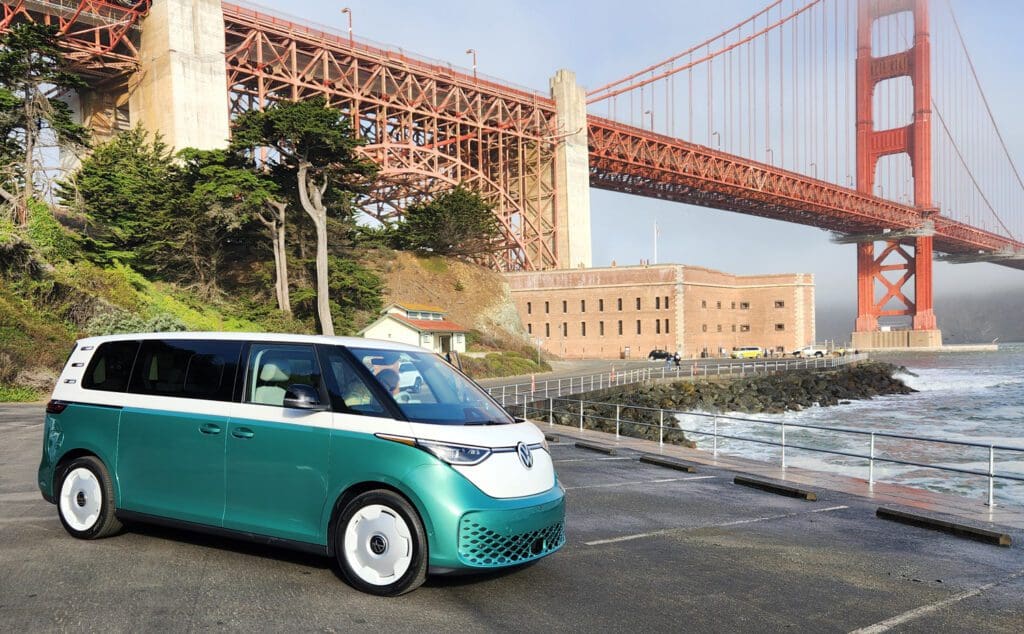
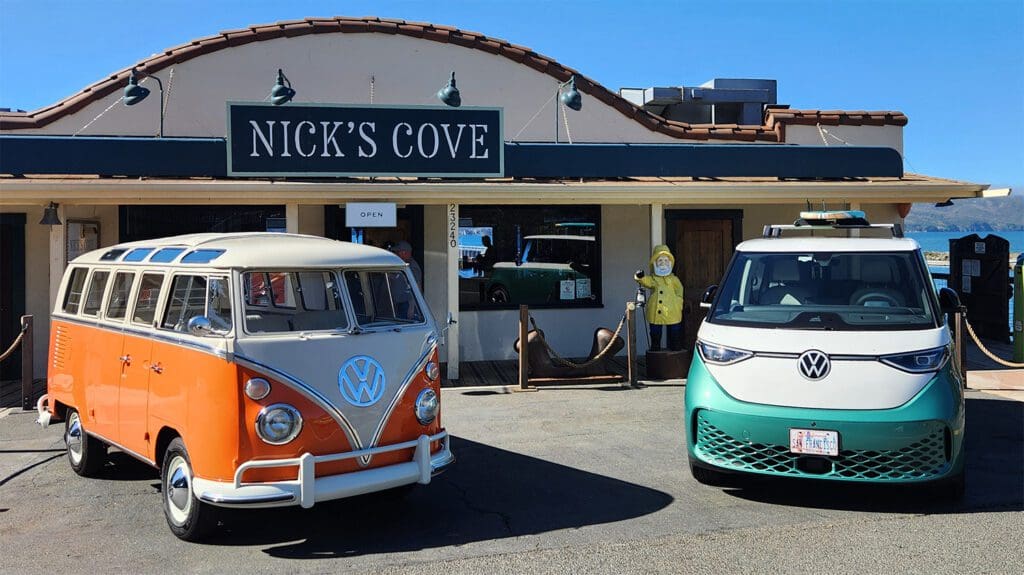
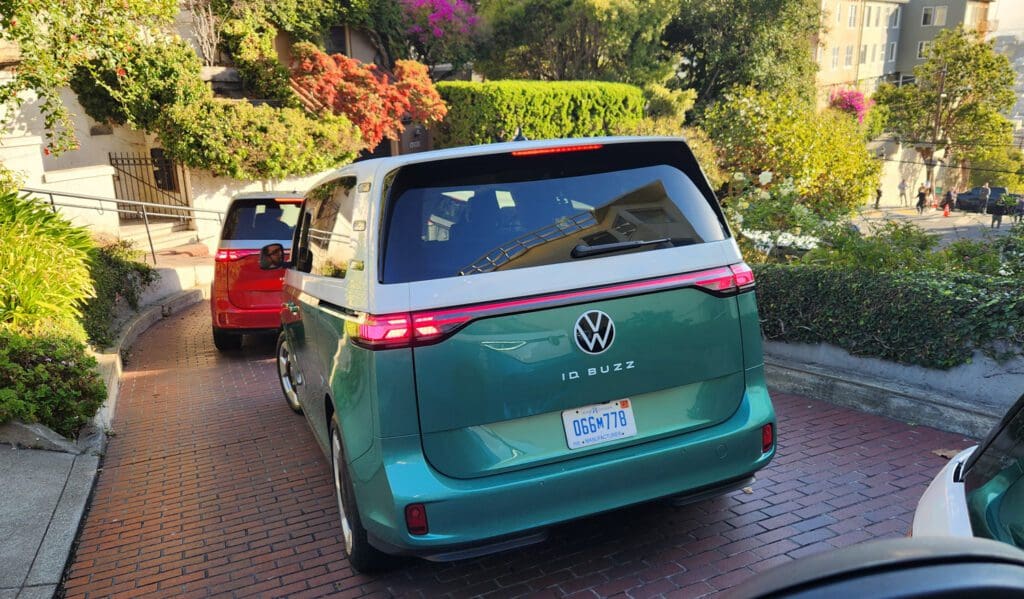
Pictures by John Voelcker.
Small turning circle, predictable efficiency
All variations of the ID.Buzz bought within the U.S. are powered by a 91-kilowatt-hour (gross) battery pack. The usual mannequin has a 210-kilowatt (282-horsepower) motor powering the rear wheels, rated at 413 lb-ft of torque. The elective 4Motion all-wheel-drive system provides a 40-kW (53-hp) motor to energy the fronts, rated at 99 lb-ft. Vary for the 2 variations is remarkably shut: 234 miles for RWD, and simply 3 miles much less for the AWD variant at 231 miles.
Behind the wheel, our jaunt down Lombard Avenue instantly made clear that whereas it is a largish car—it has the footprint of the VW Atlas Cross Sport midsize two-row SUV—its 37.4-foot turning circle makes it massively maneuverable (42.7 toes for the 4Motion AWD mannequin). It’s a trait shared with the ID.4, and we commend VW for making the most of EV packaging to do it.
Acceleration is way from a Tesla-style kick within the small of your again, however the measured tempo definitely improves on the unique Microbus which was—to not put too high quality some extent on it—very sluggish, generally dangerously so. Volkswagen cites acceleration from 0 to 60 mph in roughly 6.0 seconds, although we weren’t capable of do any instrumented testing.
Regenerative braking isn’t the strongest, maybe because of the power-to-weight ratio. We longed for one-pedal driving all the way in which all the way down to 0 mph, nevertheless it’s not supplied. The regen did really feel stronger within the AWD model, with its additional motor—although steering additionally felt heavier on that mannequin.
Dealing with and roadholding is, in a phrase, unremarkable. It’s predictable, dependable, and secure, although even on 20-inch wheels, you’ll be able to really feel the tires working onerous to handle the load of a 3-ton car if pushed even considerably energetically. That possible gained’t matter for mall runs or faculty transport.
The assorted points and downsides of VW’s person interface have been lined at size by different shops, so we gained’t element them right here. Two examples suffice. First, some screens have again buttons—however others don’t. Second, the car icon within the header bar of the 12.9-inch heart show produces one set of settings—however an an identical icon on the primary checkerboard display screen of capabilities produces a very completely different set of choices. This is mindless.
Volkswagen’s onboard Degree 2 charger is rated at 11 kilowatts, presuming the charging station and circuit can present it. DC fast-charging is quoted at as much as 200 kilowatts; as normal, that’s beneath superb circumstances. We weren’t capable of recharge the Buzz throughout our brief time with the check autos, however we look ahead to doing so after we get one for an extended check.
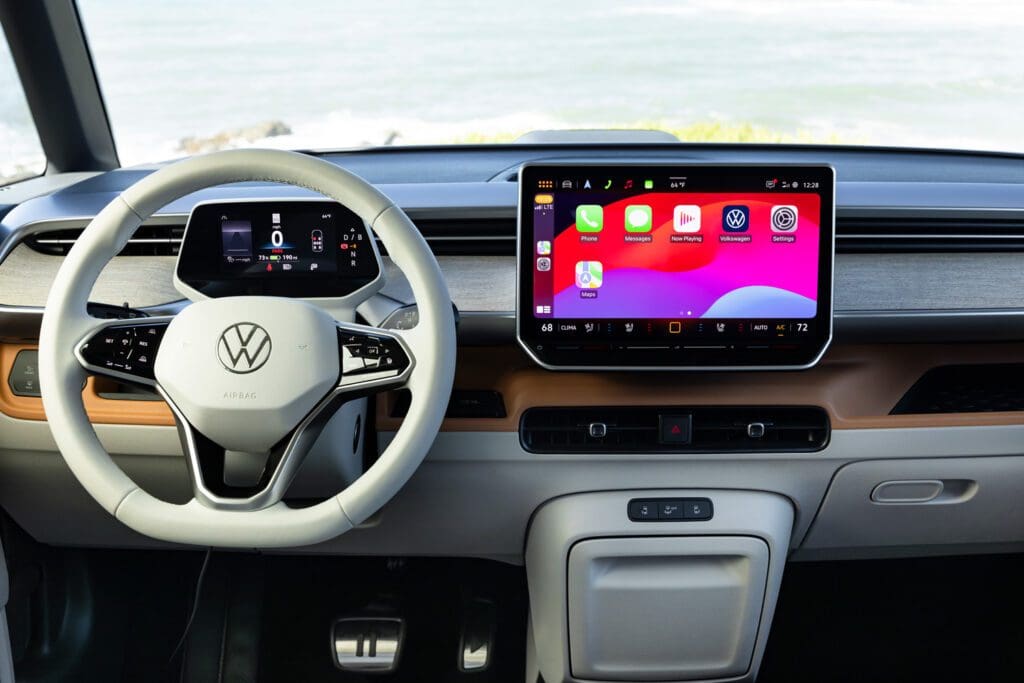
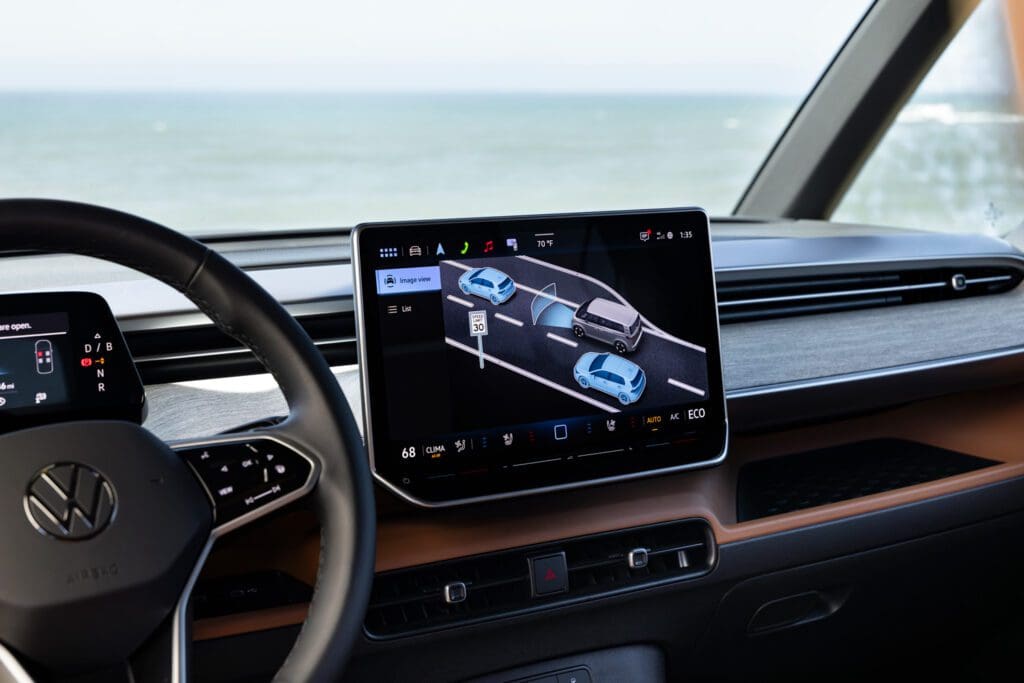
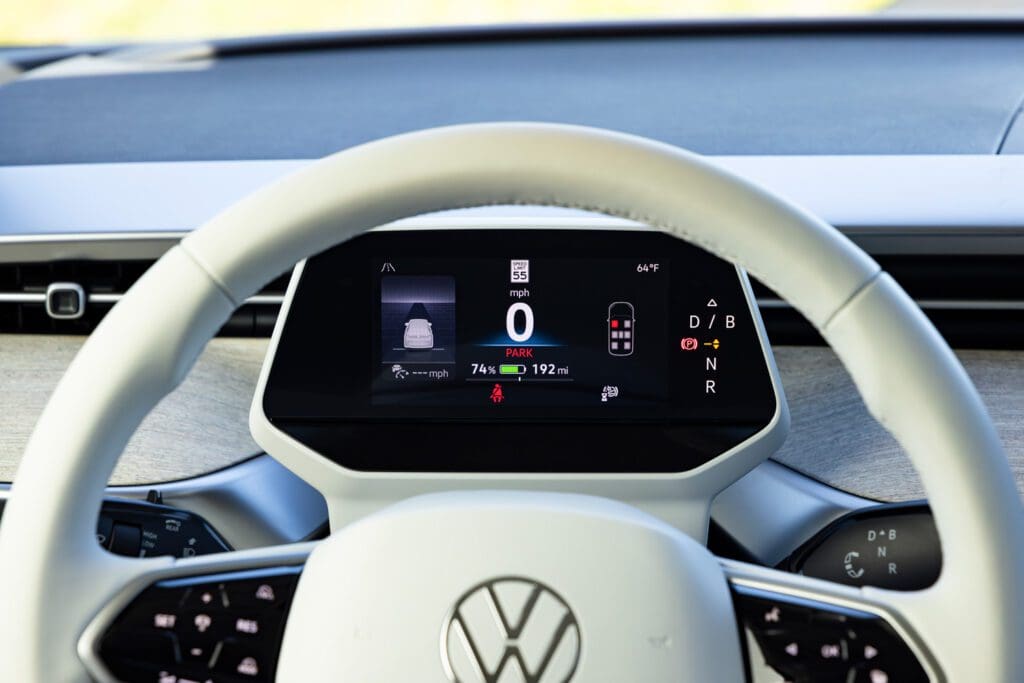
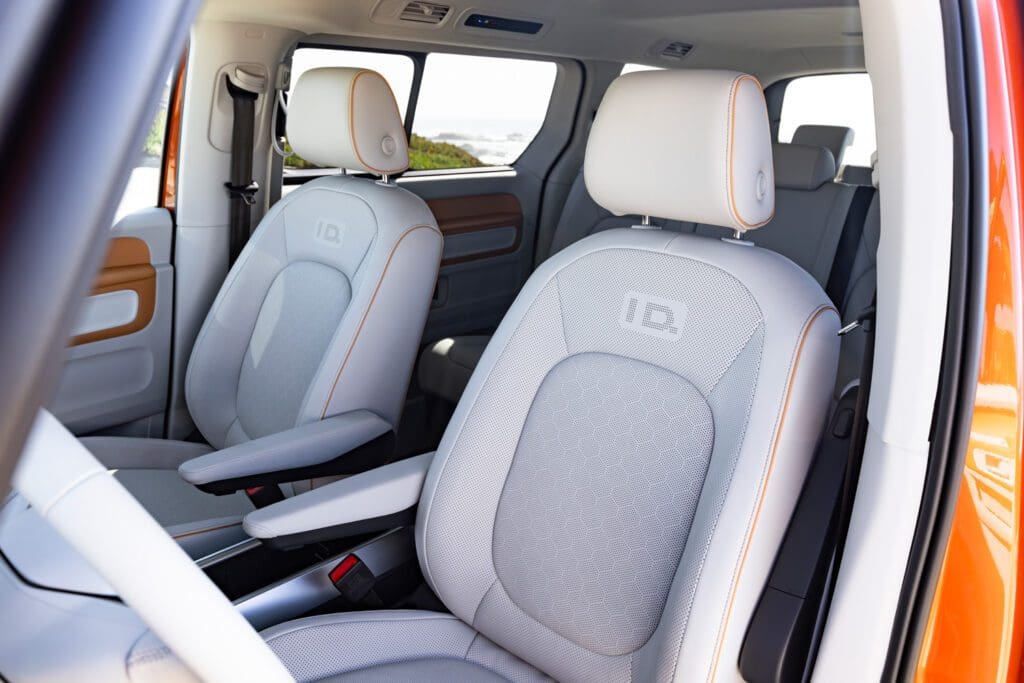
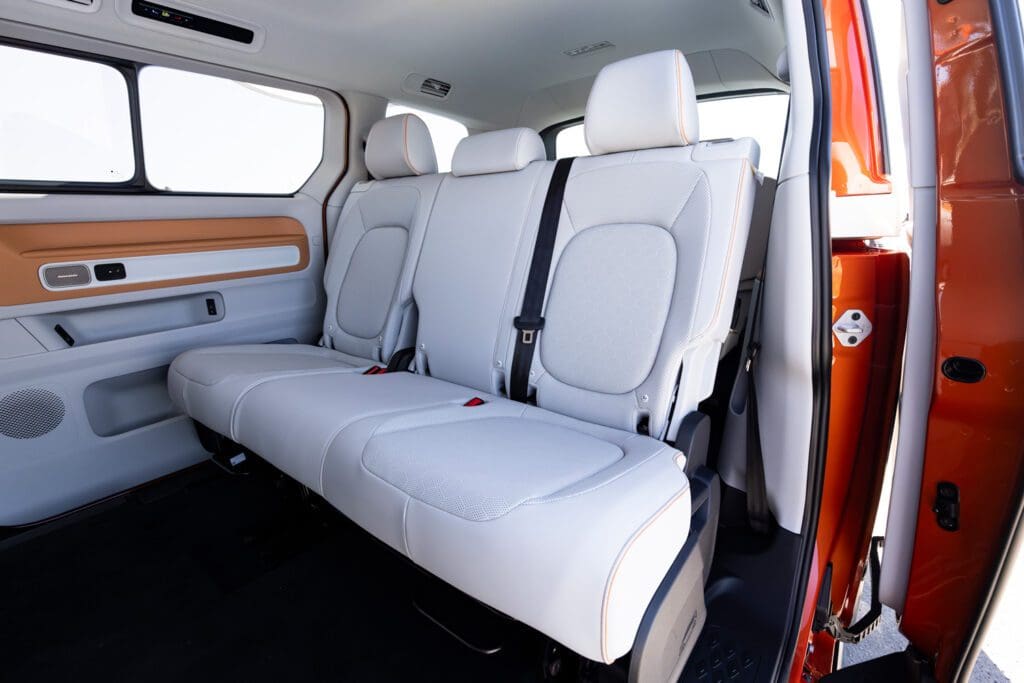

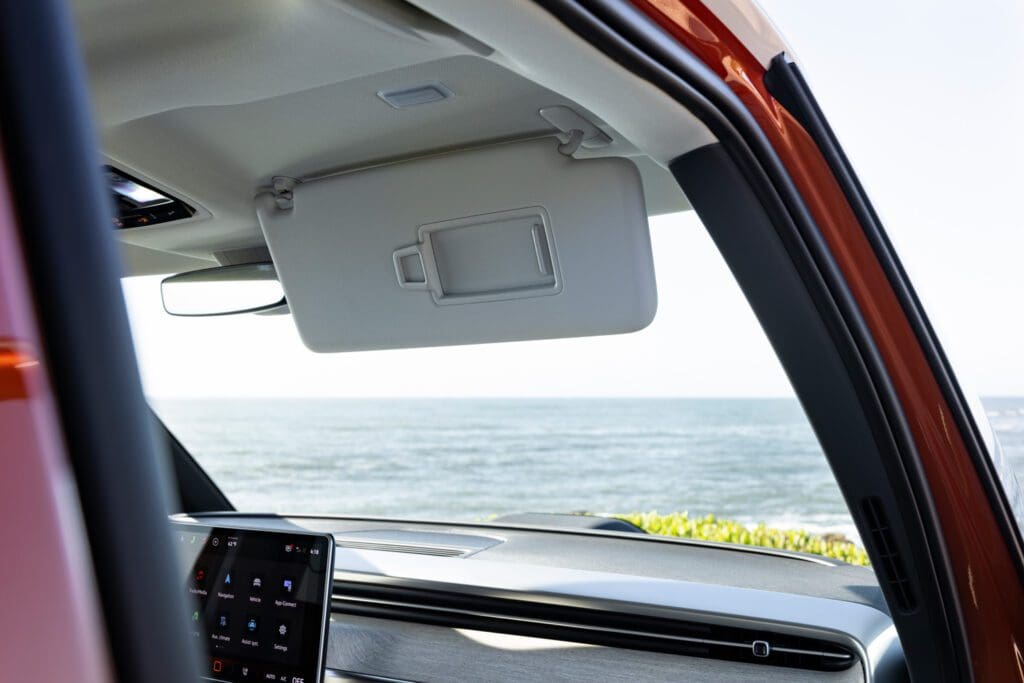
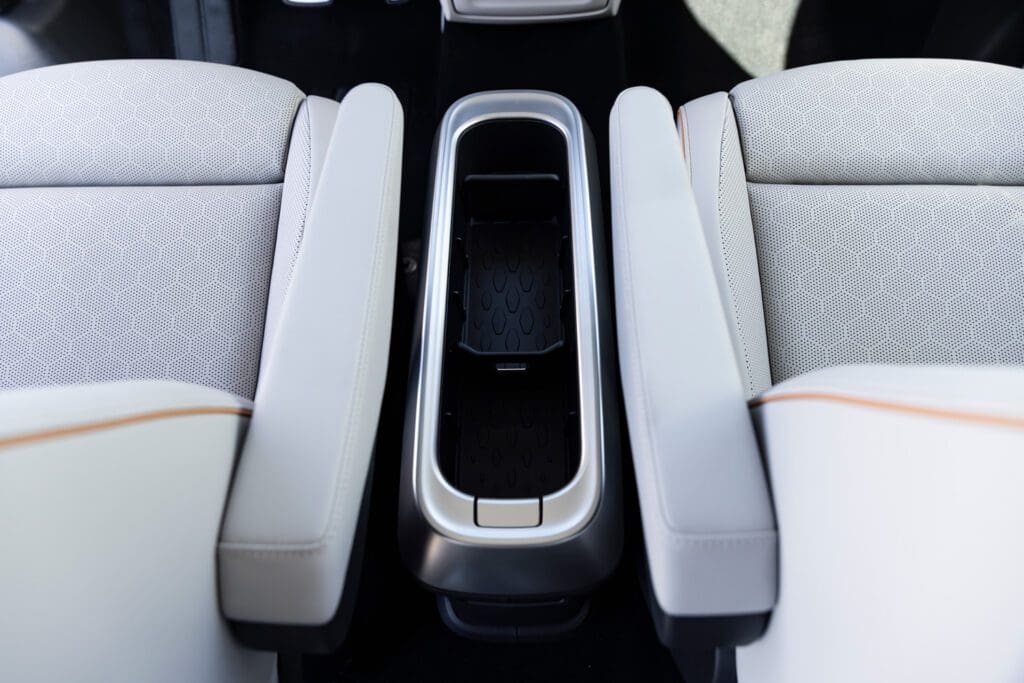
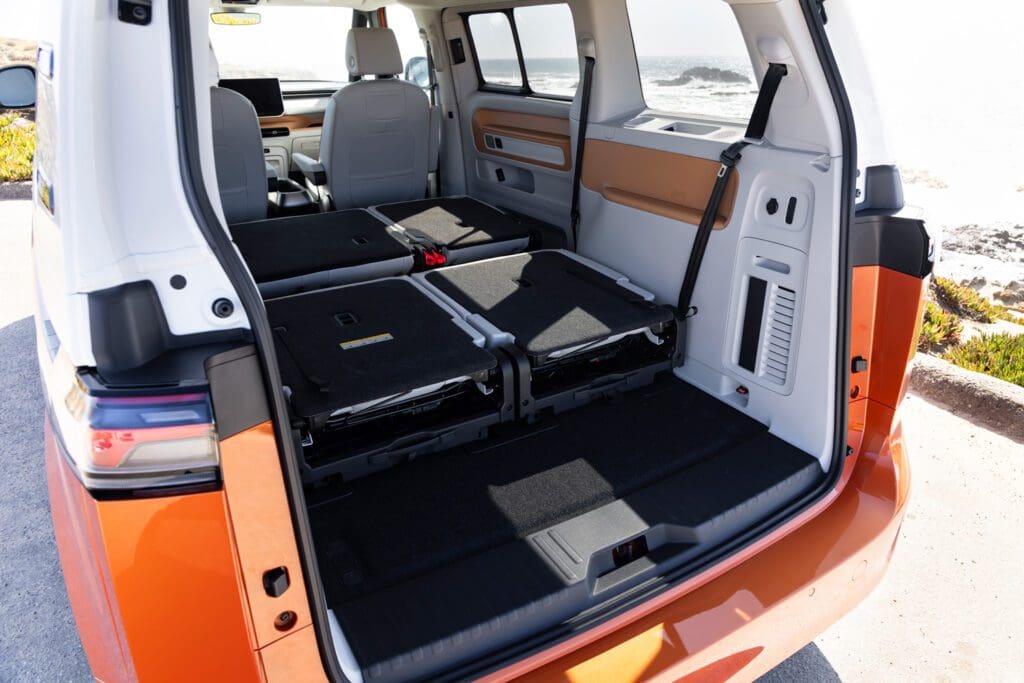
Pictures by Sam Dobbins, courtesy of Volkswagen of America, Inc.
Seven seats, nice visibility
Shorter drivers could must be taught one of the best ways of stepping up and into the Buzz, which might use a flat decrease step within the doorsill—slightly than the present beveled steel sill. The driving force finally ends up utilizing the steering wheel as a seize deal with, and the precise seize deal with above the door felt distinctly flimsy beneath the burden of every of two middle-aged male check drivers.
As soon as inside, the leatherette seats are snug, the ahead view is great, and all the cabin appears gentle and ethereal. That’s because of the largest glass roof VW has ever supplied, an ordinary function with electrochromic “sensible glass” that adjustments immediately from translucent to closely tinted on the press of a button.
The second row is both a 3-seat bench or a pair of captain’s chairs, however there’s nonetheless loads of room on the rear of the sliding doorways to enter the third row with ease. Volkswagen claims the ID.Buzz has the very best third-row legroom of any car bought in North America at present. Whereas we couldn’t examine it to a Chrysler Pacifica, Honda Odyssey, or Toyota Sienna, the third row felt as giant because the capacious Pacifica, presently our gold customary for third rows.
For flexibility, the “Buzz Field” heart console could be relocated or eliminated solely. The Buzz nonetheless doesn’t have as many helpful storage areas and cubbies as your common Hyundai. Whereas there’s a pair of cupholders within the console, as an illustration, the door pockets don’t have bottle-holders molded into them, so a bottle of water merely slides round. However, many storage areas have rubber pads on the backside to carry small, gentle gadgets in place.
In a primary for any Volkswagen bought in North America, some ID.Buzz variations embody a retractable trailer hitch. Towing capability is 2,600 lbs with customary rear-wheel drive, and three,500 lbs with AWD—and undoubtedly a corresponding hit to real-world vary. Sadly, our early-build check automobiles didn’t embody the hitch, so we are able to’t weigh in on the way it works.
What’s it, and who desires it?
One of many greatest questions across the ID.Buzz is what it competes with. VW stays strictly away from the phrase minivan, saying solely 3 p.c of hand-raisers for the Buzz are minivan house owners. By far the most important numbers come from a midsize SUV (57 p.c) or full-size SUV (28 p.c).
This led VW to a comparability slide exhibiting a really exceptional array of autos: Chevrolet Suburban, Chrysler Pacifica (plug-in) Hybrid, Kia EV9 (an EV), Rivian R1S (an EV), Toyota Sienna, and its personal VW Atlas. We would add the upcoming Lucid Gravity as properly. The ID.Buzz is shorter than all of them, however has the very best headroom within the second and third rows, and essentially the most cargo quantity: 1 cubic foot greater than even the large Chevy Suburban.
However will curiosity final? VW’s personal expertise with two generations of New Beetle confirmed that retro designs are sometimes large sellers in the beginning, however fall off shortly. Can the Buzz endure? Keep tuned.
Costs and options
The 2025 Volkswagen ID.Buzz vary begins with the Professional S mannequin at $61,545, accessible solely in rear-wheel drive. Customary options embody powered sliding aspect doorways and tailgate, 12-way adjustable heated and ventilated entrance seats, heated seats for the 2 outboard second-row positions, three-zone local weather management, no fewer than eight USB-C ports, a 12-volt outlet within the load bay, and a 120-volt socket within the entrance row.
Shifting as much as the Professional S Plus provides one other $2,500, in change for that retractable tow hitch, a head-up show for the motive force, and on the 4Motion AWD model, a heated windshield and a pair of captain’s chairs to interchange the second-row bench. The captain’s chairs are a $695 possibility on the RWD Professional S model. Different choices on all variations of the Professional S Plus embody two-tone exterior paint ($995) and the panoramic glass roof ($1,495).
Lastly, the restricted First Version bundle provides an extra $2,000 on high of that, for a complete of $67,045. It’s successfully a Professional S Plus with the two-tone paint, panoramic glass roof, and powered doorways customary, together with 20-inch wheels, Heritage flooring mats, and particular badging.
For the Professional S Plus and First Version, 4Motion all-wheel drive provides a whopping $4,500 to the worth. All costs cited embody a compulsory $1,550 vacation spot payment.
Volkswagen supplied airfare, lodging, and meals to allow Charged to convey you this first-person drive report.


